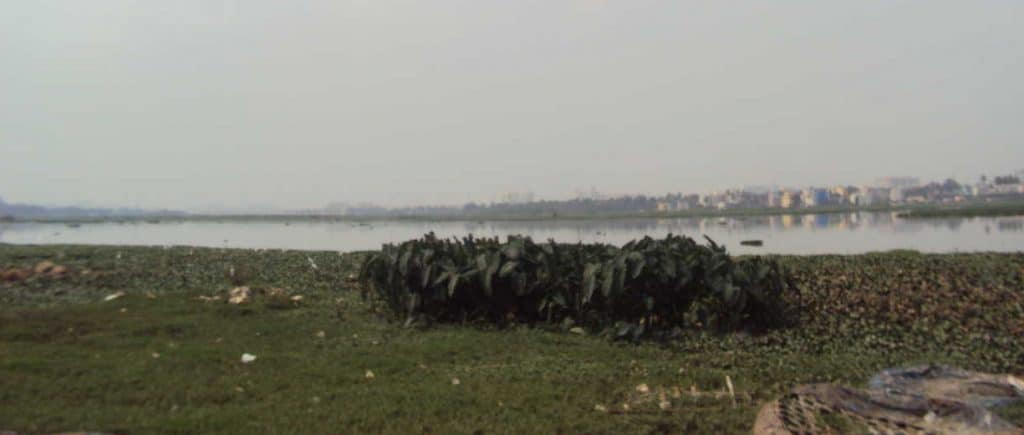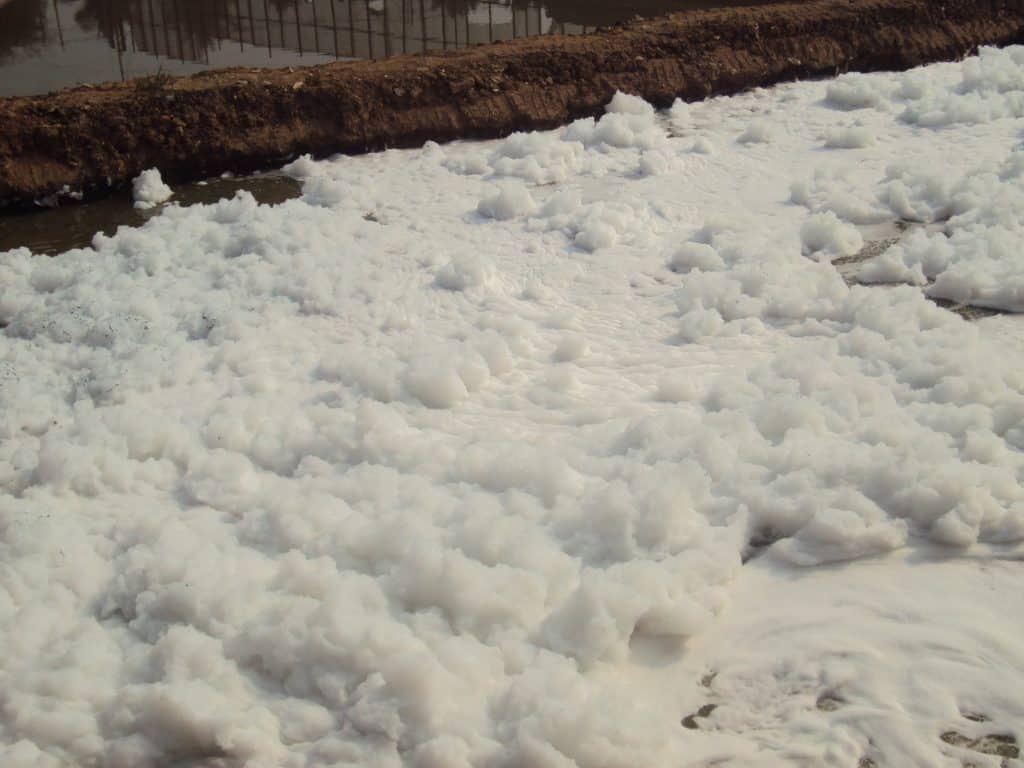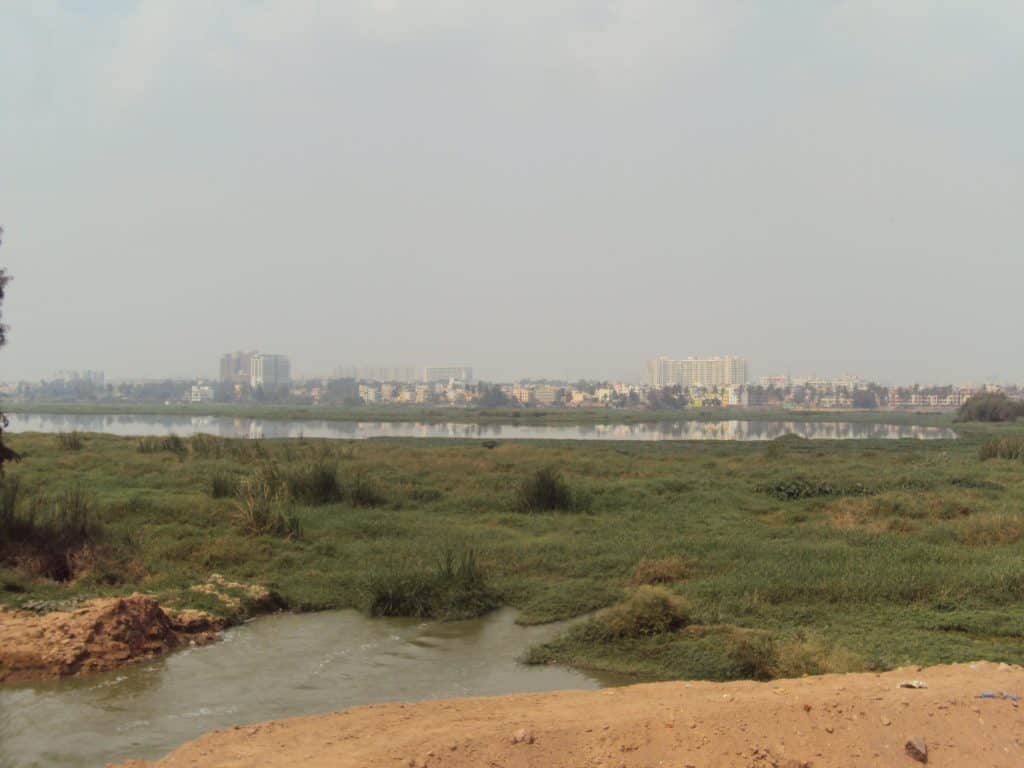There is a spot on the lake land where one gets a 180 degree view of the sprawling 445 acre Varthur lake. The lake is filled with water and emits a strong foul odour. The southern end of the lake is filled with snowy froth. A wire mesh is erected along a section of the road near the lake to prevent the froth from entering the road.
“Till the 90s, several migratory birds from Russia, Ukraine, China used to visit Varthur Lake, which acted as food source for them before they headed to the Southern Hemisphere. Once the sewage started entering the lake in the 1980s, the aquatic life started to disappear and eventually the birds too stopped coming,” says Jagadish Reddy who is a resident of the area and a member of the citizen’s group Varthur Rising.
He says that sewage currently enters the lake through sewage lines and storm water drains. He points out that sewage is diverted into storm water drains and passes through other lakes like Bellandur. It ultimately enters Varthur, which is the last lake in the city before it flows into Tamil Nadu. He adds that as a result of lake pollution, farmers in the region have been severely affected. “They are unable to grow several of the crops which they were growing earlier,” he says.

Vathur Lake. Pic: Arjun Rajan
The National Green Tribunal (NGT) had in December 2018 come down heavily on the state government for having failed to protect and rejuvenate Agara, Bellandur and Varthur lakes. As part of its directives the government has been ordered to deposit 500 crores into an escrow account which will be used for the implementation of an action plan to rejuvenate Bellandur and Varthur lakes.
Expert committee’s recommendations remain unimplemented
There have been attempts in the past to rejuvenate the lakes. An expert committee headed by the Additional Chief Secretary to the Government, Urban Development Department, Government of Karnataka, along with academic experts and heads of various departments, was formed in May 2016 to assess the various causes of water contamination in Bellandur and Varthur lakes and suggest possible solutions. The committee presented its findings and recommendations in late 2016.
It found that the water was heavily polluted in both the lakes because of the release of untreated sewage and inadequately treated industrial effluents into the lake. The report noted that as a result there was decline in aquatic diversity, heavy metal content found in crops grown nearby, contamination of ground water, and formation of froth.

Snowy froth in Southern end of Varthur Lake, Pic: Arjun Rajan

Snowy froth present in the southern end of the lake. Pic: Arjun Rajan
The committee in their report made several short term and long recommendations and assigned responsibility to various government bodies. In order to monitor the progress of the rejuvenation process, the report recommended the formation of citizen lake monitoring committees for both lakes which would comprise of department officials, scientific experts, and citizens from the locality.
Jagadish says that even though the lake monitoring committee was formed in Varthur, it wasn’t effective and slowly died down. He adds that “the most important aspect of the recommendation was to arrest entry of untreated sewage into the lakes. The BWSSB officials who would come for the committee meetings were lower rung officers who couldn’t make commitments.” He said that actions that were taken weren’t done as per the recommendations.
Intervention by NGT
The NGT had on April 2018 appointed a committee headed by a senior advocate of the Tribunal to review existing action plan. The Committee came to the conclusion that the authorities have neglected their duties and have done very little. The committee suggested various recommendations on May 2018.
The NGT in its order dated December 6th 2018 gave the following directions: the recommendations of May 2o18 shall be carried out to ensure that no polluted waste water is discharged into the water bodies; action plan shall be prepared by the state/BBMP within a month of the directions; a committee must be formed headed by Justice Santosh Hegde (former Supreme Court Judge), T V Ramachandran, Professor – IISc, and nominees from the central and state pollution control board, to oversee the compliance of the directions.

Varthur lake Pic: Arjun Rajan
The state of Karnataka has been asked to deposit a sum of Rs 500 crore for the implementation of the Action plan. The government has filed a review petition which was dismissed by the NGT. The first visit by the committee to oversee the work at Bellandur and Varthur lake will be held on February 22. In a move to increase transparency, the committee plans to help citizens view the progress and provide inputs through a web page, by the end of February.
The coming months will provide a clearer picture of whether the various departments involved in rejuvenation of the lakes follow the recommendations systematically.
Thanks for this post, Arjun. I cross by this lake everyday to work, and see the urgency to revive this wonderful water-body.
It would be great if BBMP looks at giving this lake proper boundary structures and making a jogging track around it after it has been cleaned properly. Once this lake becomes a revenue flow for the government, it might gather more attention.
Hi I am resident near the lake. is the Aquatic life completely finished in this lake?
I thought of introducing Guppies (Fishes) in the lake to combat the growing menaces of mosquitoes.
Is this feasible?